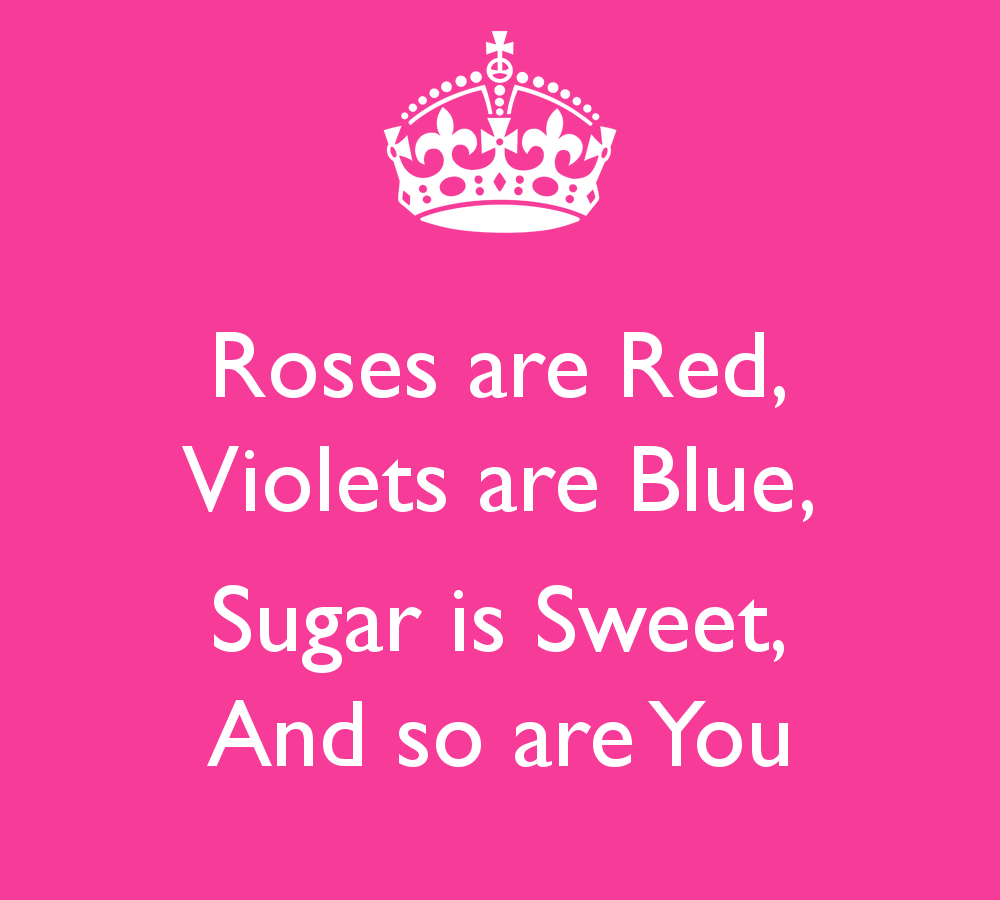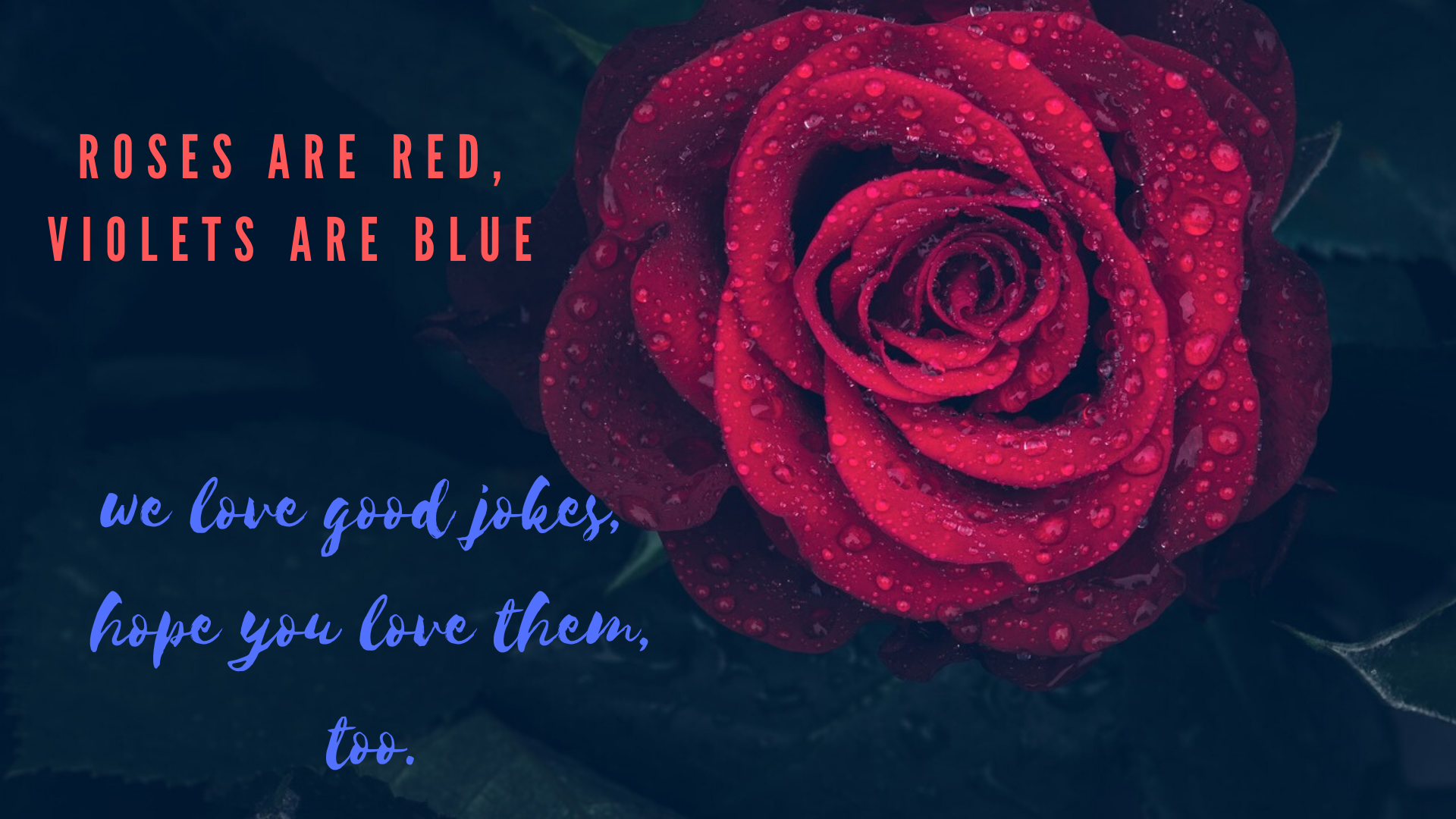Let’s talk about roses, violets, and roasts—but not in the way you’d expect. "Roses are red, violets are blue" has been a staple of romantic poetry for centuries. But what happens when we take this timeless phrase and give it a modern, edgy twist? Enter the world of "roses are red violets are blue roasts," where love meets wit, and humor takes center stage. This trend is more than just playful wordplay; it’s a cultural phenomenon that’s here to stay.
Now, I know what you’re thinking: how does one turn something as sweet as a love poem into a roast? Stick with me, because this is going to be a wild ride. The concept of roasting with poetry isn’t new, but its popularity has skyrocketed in recent years, especially on platforms like Twitter and Instagram. People are finding joy in blending the romantic with the sarcastic, creating verses that make you laugh instead of swoon.
Whether you’re a fan of classic literature or just someone who appreciates a good joke, this article will dive deep into the world of roses, violets, and roasts. We’ll explore its origins, evolution, and why it’s become such a beloved form of expression. So grab your favorite beverage, sit back, and let’s unravel the magic behind this unique blend of romance and humor.
Read also:How To Check Vanilla Balance A Comprehensive Guide
What Are Roses Are Red Violets Are Blue Roasts?
Let’s break it down, shall we? At its core, "roses are red violets are blue roasts" are poems that follow the traditional rhyme scheme of the famous line but replace the romantic sentiment with a sharp, witty insult or observation. It’s like taking a classic and flipping it on its head. Instead of declaring your undying love, you’re pointing out someone’s flaws—or even your own—in a humorous way.
For example:
Roses are red,
Violets are blue,
Your outfit’s a mess,
And so are you.
Read also:Exploring The London House Chicago A Premier Destination For Luxury And Comfort
See what I did there? This isn’t just about being mean; it’s about delivering a clever punchline that leaves people laughing. And let’s be honest, sometimes a good roast is exactly what we need to brighten our day.
Origins of the Trend
Like most internet trends, the exact origin of "roses are red violets are blue roasts" is a bit murky. However, it’s safe to say that the concept gained traction in the early 2010s, thanks to social media platforms like Twitter. Users started experimenting with the classic rhyme scheme, turning it into a vehicle for humor and satire.
This trend wasn’t born in a vacuum, though. It builds on a long tradition of poetic roasting that dates back centuries. From Shakespearean insults to modern-day rap battles, the art of delivering a cutting remark through verse has always been a part of human culture. What makes this particular trend so special is its accessibility. Anyone can write a "roses are red" roast, no matter their poetic abilities.
How Did It Become Popular?
The rise of social media played a huge role in popularizing this trend. Platforms like Twitter and Instagram provide the perfect environment for quick, witty content to spread like wildfire. People love sharing funny posts, and "roses are red violets are blue roasts" fit the bill perfectly.
Plus, let’s face it—humor is universal. Whether you’re a student, a working professional, or a stay-at-home parent, everyone appreciates a good laugh. These roasts tap into that universal need for humor, making them relatable and shareable.
Why Do People Love Them?
There are a few reasons why "roses are red violets are blue roasts" have captured the hearts—and minds—of so many people. First and foremost, they’re just plain funny. Who doesn’t love a well-crafted insult disguised as a love poem?
But beyond the humor, there’s something deeply satisfying about the structure itself. The familiar rhythm of "roses are red, violets are blue" sets up an expectation that’s delightfully subverted by the twist at the end. It’s like a mini rollercoaster ride for your brain.
Additionally, these roasts often reflect real-life situations or common experiences, making them even more relatable. For instance:
Roses are red,
Violets are blue,
Your Wi-Fi’s slow,
And so are you.
Who hasn’t dealt with spotty internet connection? That’s the beauty of this trend—it speaks to our everyday struggles in a way that’s both humorous and comforting.
Key Characteristics of Roses Are Red Violets Are Blue Roasts
Not all "roses are red violets are blue" poems are created equal. To truly master the art of roasting, you need to understand its key characteristics:
- Structure: Always follow the classic rhyme scheme of "roses are red, violets are blue."
- Humor: The punchline should be funny, clever, or unexpected.
- Relevance: The best roasts often reference current events, pop culture, or everyday experiences.
- Tone: While the intent is to roast, the tone should remain lighthearted and playful.
By sticking to these guidelines, you can create roasts that resonate with your audience and leave them wanting more.
Examples of Famous Roses Are Red Violets Are Blue Roasts
Let’s take a look at some of the most iconic examples of this trend:
Example 1: The Classic Roast
Roses are red,
Violets are blue,
Your shirt’s inside out,
And so are you.
This one’s simple, yet effective. It combines a relatable observation with a playful insult, making it perfect for a quick laugh.
Example 2: The Pop Culture Roast
Roses are red,
Violets are blue,
You think you’re Beyoncé,
But you’re not even close.
Referencing pop culture icons is a great way to make your roasts more engaging and relevant.
Example 3: The Self-Roast
Roses are red,
Violets are blue,
I burned the toast,
And so would you.
Self-deprecating humor always goes a long way. By poking fun at ourselves, we invite others to join in on the laughter.
How to Write Your Own Roses Are Red Violets Are Blue Roast
Ready to try your hand at writing your own roast? Here’s a step-by-step guide to help you get started:
- Start with the basics: Begin with the classic lines "roses are red, violets are blue." This sets the stage for your clever twist.
- Choose your target: Decide who or what you’re roasting. It could be a person, an object, or even an abstract concept.
- Add your punchline: Think of a funny, unexpected observation to complete the poem. Remember, the key is to keep it light and playful.
- Refine your work: Read your roast aloud to ensure it flows well and packs the desired punch.
With a little practice, you’ll be crafting roasts that leave people in stitches in no time.
The Psychology Behind Roses Are Red Violets Are Blue Roasts
Why do we find humor in roasting each other? The answer lies in psychology. Laughter is a powerful tool for bonding and stress relief. When we share a joke—even if it’s at someone else’s expense—we create a sense of connection and camaraderie.
Moreover, roasting can be a form of social commentary. By pointing out flaws or absurdities in a humorous way, we encourage critical thinking and self-reflection. It’s no wonder why "roses are red violets are blue roasts" have become such a popular form of expression.
Impact on Pop Culture
This trend has had a significant impact on pop culture, influencing everything from memes to music. Artists and comedians alike have embraced the concept, incorporating it into their work to great effect. It’s a testament to the power of creativity and the human need for humor.
But beyond its entertainment value, "roses are red violets are blue roasts" also serve as a reminder of the importance of perspective. In a world filled with serious issues, sometimes the best way to cope is to laugh at ourselves and each other.
Challenges and Controversies
Of course, not everyone is a fan of roasting. Some critics argue that it promotes negativity and bullying. While it’s true that there’s a fine line between playful teasing and hurtful insults, most proponents of the trend emphasize the importance of maintaining a lighthearted tone.
Ultimately, the success of a roast depends on the intent behind it. If the goal is to make people laugh without causing harm, then it can be a positive force in our lives.
Conclusion
In conclusion, "roses are red violets are blue roasts" are more than just a fun trend—they’re a reflection of our shared humanity. They remind us that humor is a powerful tool for connection and self-expression. Whether you’re a seasoned roaster or just starting out, there’s something for everyone in this world of poetic wit.
So why not give it a try? Write your own roast, share it with friends, and watch the laughter unfold. And remember, if all else fails, you can always fall back on this classic:
Roses are red,
Violets are blue,
If you don’t like my roast,
Then this one’s for you!
Thanks for reading, and don’t forget to leave a comment or share this article if you enjoyed it. Until next time, keep laughing and keep roasting!
Table of Contents
- What Are Roses Are Red Violets Are Blue Roasts?
- Origins of the Trend
- How Did It Become Popular?
- Why Do People Love Them?
- Key Characteristics of Roses Are Red Violets Are Blue Roasts
- Examples of Famous Roses Are Red Violets Are Blue Roasts
- How to Write Your Own Roses Are Red Violets Are Blue Roast
- The Psychology Behind Roses Are Red Violets Are Blue Roasts
- Impact on Pop Culture
- Challenges and Controversies


